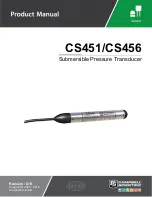
Frequency-Agile UHF Belt-Pack Transmitter
Rio Rancho, NM
The wiring diagrams included in this section represent
the basic wiring necessary for the most common types
of microphones and other audio inputs. Some micro-
phones may require extra jumpers or a slight variation
on the diagrams shown.
It is virtually impossible to keep completely up to date
on changes that other manufacturers make to their
products, thus you may encounter a microphone that
differs from these instructions. If this occurs please call
our toll-free number listed under Service and Repair in
this manual or visit our web site at:
http://www.lectrosonics.com
The Audio Input Jack is wired as shown below:
PIN.1
Shield (ground) for positive biased electret lava-
liere microphones. Shield
(ground) for dynamic micro-
phones and line level inputs.
PIN.2
Bias voltage source for posi-
tive biased electret lavaliere
microphones.
PIN.3
Low impedance microphone
level input for dynamic
microphones. Also accepts
hand-held electret micro-
phones provided the micro-
phone has its own built-in
battery.
PIN.4
Bias voltage selector for Pin 3. Pin 3 voltage (0, 2
or 4 volts) depends on Pin 4 connection.
Pin 4 tied to Pin 1: 0 V
Pin 4 Open:
2 V
Pin 4 to Pin 2:
4 V
PIN.5
High impedance, line level input for tape decks,
mixer outputs, musical instruments, etc.
Microphone RF Bypassing
When used on a wireless transmitter, the microphone
element is in the proximity of the RF coming from the
transmitter. The nature of electret microphones makes
them sensitive to RF, which can cause problems with
the microphone/transmitter compatibility. If the electret
microphone is not designed properly for use with wire-
less transmitters, it may be necessary to install a chip
capacitor in the mic capsule or connector to block the
RF from entering the electret capsule.
Some mics require RF protection to keep the radio
signal from affecting the capsule, even though the
transmitter input circuitry is already RF bypassed (see
schematic diagram).
If the mic is wired as directed, and you are having dif-
ficulty with squealing, high noise, or poor frequency
response, RF is likely to be the cause.
The best RF protection is accomplished by installing
bypass capacitors at the mic capsule. If this is not pos-
sible, or if you are still having problems, capacitors can
be installed on the mic pins inside the TA5F connector
housing.
Install the capacitors as follows: Use 330 pF capacitors.
Capacitors are available from Lectrosonics. Please
specify the part number for the desired lead style.
Leaded capacitors: P/N 15117
Leadless capacitors: P/N SCC330P
All Lectrosonics lavaliere mics are already bypassed
and do not need any additional capacitors installed for
proper operation.
Line Level Signals
The normal hookup for
line level signals is:
• Signal Hot to pin 5
• Signal Gnd to pin 1
• pin 4 jumped to pin 1
This allows signal levels
up to 3V RMS to be ap-
plied without limiting.
If more headroom is
needed, insert a 20 k
resistor in series with pin 5. Put this resistor inside the
TA5F connector to minimize noise pickup.
5-Pin Input Jack Wiring
4
3
2
1
5
LECTROSONICS
TRANSMITTER
INPUT JACK
3 WIRE MIC
2 WIRE MIC
CAPSULE
CAPSULE
SHIELD
AUDIO
SHIELD
AUDIO
BIAS
Alternate locations for bypass capacitors
TA5F
CONNECTOR
TA5F
CONNECTOR
Preferred locations for bypass capacitors


































